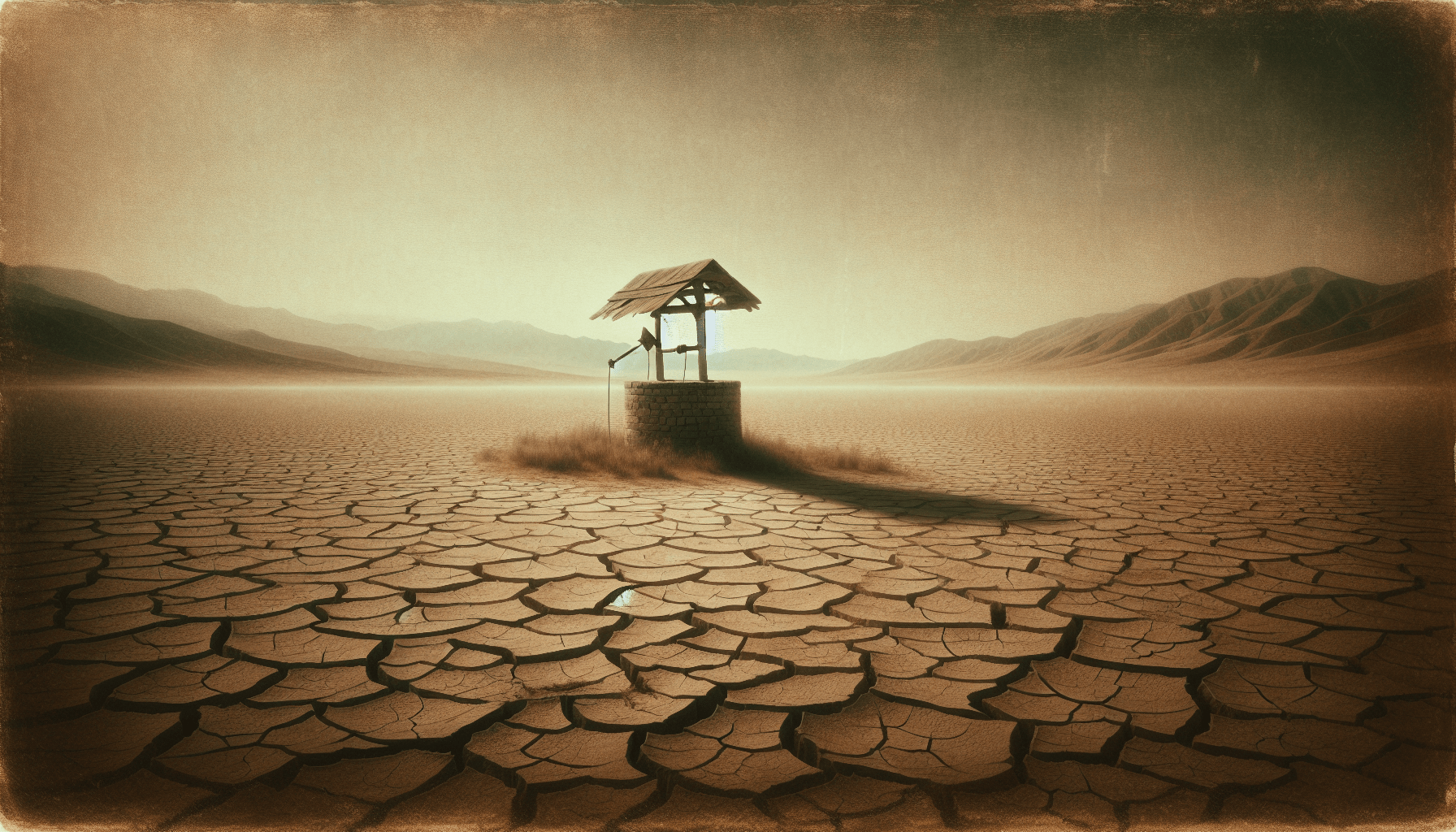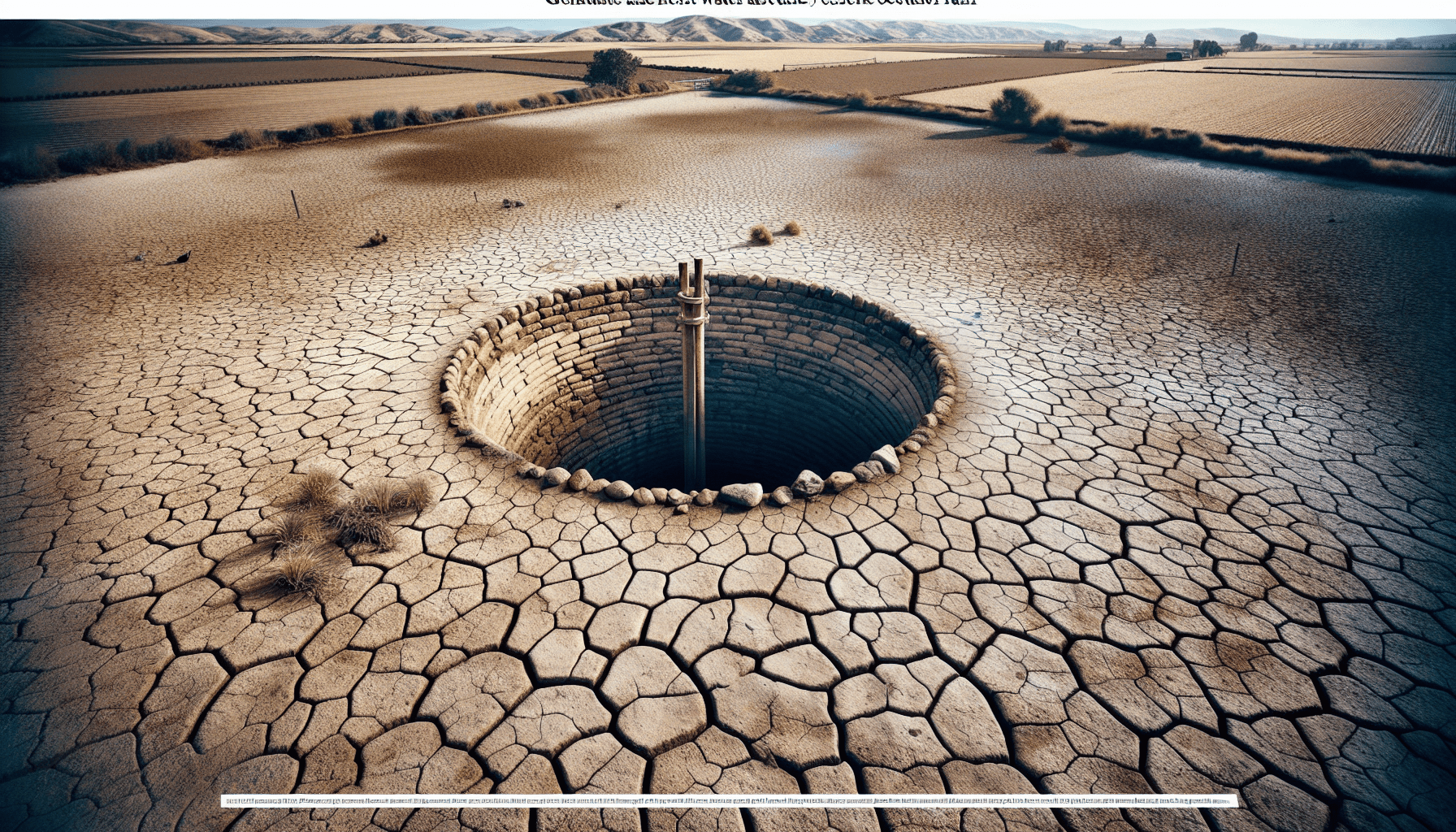Despite recent rainfall in California, the water wells in the state’s Central Valley are drying up at an alarming rate. This phenomenon is causing significant concern among residents and farmers who rely on these wells for their water supply. Despite efforts to conserve water and implement alternative water sources, such as surface water and imported water, many individuals and communities are facing severe water shortages. This article will explore the factors contributing to the drying up of Central Valley water wells and the potential consequences for California’s agricultural industry and water security.
Overview of the Central Valley Water Wells
The Central Valley, located in California, is an agricultural powerhouse and one of the most productive regions in the United States. Spanning over 400 miles in length, the Central Valley is home to a vast network of water wells that play a critical role in sustaining the agricultural activities in the area.
Geographical location of the Central Valley
The Central Valley is situated in the heart of California, bordered by the Sierra Nevada Mountains to the east and the Coastal Ranges to the west. It covers an area of approximately 22,500 square miles, making it one of the largest valleys in the world. The region is divided into two main sections: the Sacramento Valley in the north and the San Joaquin Valley in the south.
Importance of water wells in the region
Water wells are of utmost importance in the Central Valley as they provide a vital source of groundwater for agricultural irrigation. With its fertile soil, the region has become a major producer of various crops such as almonds, grapes, tomatoes, and cotton. Water from the wells is essential for crop growth and sustains the livelihoods of farmers and workers in the agricultural industry.
Current status of water wells in the Central Valley
Unfortunately, the Central Valley is facing a significant water crisis. The prolonged drought, coupled with other factors such as climate change and over-extraction of water, has led to the drying up of many water wells in the region. This has severe implications for the local communities, the agricultural industry, and the overall economy of the area.
Recent Rainfall in California
Rainfall patterns in California
California has a Mediterranean climate with a distinct wet and dry season. Rainfall primarily occurs during the winter months, with the majority of precipitation happening between December and March. However, rainfall patterns in the state can vary greatly from year to year, leading to periods of both drought and heavy rainfall.
Effects of recent rainfall in the Central Valley
In recent years, California has experienced bouts of heavy rainfall, providing some relief to the parched Central Valley. These rain events have helped replenish the groundwater levels, resulting in a temporary respite for water wells in the region. However, the long-term impact of these rainfall events on water availability remains uncertain.
Implications for water wells
While recent rainfall has been beneficial in easing the water crisis in the Central Valley, it is important to note that it is not a permanent solution. The region still relies heavily on groundwater supplies, which are limited and susceptible to depletion. Therefore, it is crucial to implement sustainable water management practices to ensure the long-term viability of water wells in the area.

Drying Up of Water Wells
Factors contributing to the drying up of water wells
Several factors have contributed to the drying up of water wells in the Central Valley. These include prolonged drought, over-extraction of groundwater, and declining groundwater levels. The combination of these factors has put immense pressure on the already strained water resources in the region.
Declining groundwater levels
Groundwater levels in the Central Valley have been declining at an alarming rate. The excessive pumping of groundwater for agricultural and domestic use has resulted in significant depletion of the underground water reserves. As a result, many water wells have been affected, with some running completely dry.
Increased water demand and extraction
The increasing demand for water in the Central Valley, coupled with unsustainable extraction practices, has exacerbated the water crisis. The agricultural industry, which heavily relies on water for irrigation, accounts for a significant portion of water usage in the region. The combination of population growth, urban expansion, and agricultural activities has led to an unsustainable water extraction rate.
Consequences for the Agricultural Industry
Impact on crop production
The drying up of water wells has had a severe impact on crop production in the Central Valley. Without access to adequate water supplies, farmers have been forced to scale back their operations or choose crops that require less water. This has resulted in reduced yields and a decline in the overall productivity of the agricultural sector.
Loss of jobs and economic revenue
The agricultural industry is a major source of employment and economic revenue in the Central Valley. The drying up of water wells has led to the loss of jobs and income for many farmers, farmworkers, and related industries. This has caused significant economic hardship in the region and has had ripple effects on the local communities.
Potential long-term effects on agriculture
If the water crisis in the Central Valley persists, there could be long-term consequences for the agricultural industry. Farmers may be forced to abandon their land or switch to less water-intensive crops, potentially leading to a decline in agricultural diversity and productivity. This, in turn, could have far-reaching effects on food security, local economies, and regional development.

The Role of Climate Change
Link between climate change and water scarcity
Climate change has played a significant role in exacerbating water scarcity issues worldwide, including in the Central Valley. Rising temperatures, changing precipitation patterns, and increased evaporation rates are all consequences of climate change that directly impact water availability. These changes can lead to more frequent and severe droughts, putting additional pressure on water wells.
Projected future climate patterns in California
Climate projections for California indicate a future marked by increased temperatures and more unpredictable rainfall patterns. While there may be periods of heavy rainfall, these events may not alleviate the underlying water scarcity issues in the Central Valley. It is crucial to develop strategies that account for the anticipated climate changes to ensure the long-term sustainability of water resources.
Adaptation strategies to mitigate the effects
To mitigate the effects of climate change and address the water crisis in the Central Valley, adaptation strategies are crucial. These may include implementing more efficient irrigation techniques, adopting crop and water management practices that are resilient to changing weather patterns, and investing in climate-resilient infrastructure. These measures can help reduce water demand, increase water use efficiency, and enhance the overall resilience of the agricultural sector.
Water Conservation Measures
Existing water conservation practices
Water conservation practices are essential in addressing the water crisis in the Central Valley. Many farmers and water users have already implemented various measures to reduce water consumption, such as drip irrigation, precision agriculture, and soil moisture monitoring. These practices help optimize water use, minimize wastage, and improve overall water efficiency.
Promotion of efficient irrigation techniques
Efforts to promote efficient irrigation techniques have gained traction in recent years. By transitioning from conventional flood irrigation to more efficient methods like drip and sprinkler systems, farmers can significantly reduce water usage while maintaining crop productivity. These techniques also help minimize the loss of water due to evaporation and runoff.
Government policies and regulations
The government plays a crucial role in driving water conservation efforts. Through policies and regulations, the government can incentivize water users to adopt more sustainable practices, enforce water use restrictions during drought periods, and invest in water infrastructure projects. These initiatives can help create a more resilient and sustainable water supply system in the Central Valley.

Potential Solutions
Investment in water infrastructure
Investing in water infrastructure is crucial for addressing the water crisis in the Central Valley. Upgrading and expanding water storage facilities, such as dams and reservoirs, can help capture and store excess rainfall for future use. Additionally, investments in water recycling and reclamation systems can provide an alternative source of water, reducing the strain on water wells.
Implementation of groundwater management plans
Implementing robust groundwater management plans is essential for sustainable water management in the Central Valley. These plans can include measures such as the establishment of water quotas, monitoring and regulating of extraction rates, and the promotion of recharge and storage projects. By managing groundwater resources effectively, the region can ensure their long-term viability.
Exploration of alternative water sources
To reduce dependence on groundwater and mitigate the water crisis, exploring alternative water sources is necessary. This may include capturing and treating stormwater and wastewater for reuse in agricultural and other non-potable applications. Additionally, exploring desalination technologies for brackish or seawater could provide a reliable and sustainable source of water in coastal areas.
Community Impact
Effects on residents and local communities
The drying up of water wells has had a significant impact on residents and local communities in the Central Valley. Many individuals rely on wells for their household water supply, and the depletion of these wells has left them without access to clean and safe drinking water. This poses a significant health and quality of life concern for the affected communities.
Health and safety concerns
The lack of access to clean water raises various health and safety concerns. Without a reliable water supply, sanitation and hygiene practices may be compromised, increasing the risk of waterborne diseases. Additionally, communities without access to safe drinking water may be forced to rely on potentially contaminated sources, further compromising their health and overall well-being.
Challenges faced by vulnerable populations
Vulnerable populations, such as low-income households and marginalized communities, are disproportionately affected by the water crisis. Limited resources, lack of infrastructure, and inadequate access to alternative water sources make it even more challenging for these populations to cope with the water shortage. It is essential to prioritize their needs and provide targeted support to ensure equitable access to water resources.

Government Response
Emergency measures and relief efforts
In response to the water crisis in the Central Valley, the government has implemented emergency measures and relief efforts. These may include the provision of emergency water supplies, financial assistance for well repairs or drilling new wells, and temporary water distribution centers. These initiatives aim to alleviate the immediate impact of the water shortage and provide short-term relief to affected communities.
Funding for water projects
To address the long-term water challenges, the government has allocated funding for various water projects in the Central Valley. This funding helps support infrastructure development, research and innovation, and the implementation of sustainable water management strategies. By investing in these projects, the government aims to ensure the resilience and availability of water resources in the region.
Collaboration with stakeholders and experts
Addressing the water crisis requires collaboration between government agencies, stakeholders, and experts in the field. By working together, these entities can identify innovative solutions, share knowledge and resources, and develop comprehensive strategies to tackle the complex challenges posed by the water scarcity in the Central Valley.
Call for Action
Importance of addressing the water crisis
The water crisis in the Central Valley demands immediate attention and action. The depletion of water wells and the scarcity of water resources threaten the region’s agricultural productivity, economic stability, and the well-being of its residents. It is crucial to recognize the urgency of the situation and prioritize sustainable water management practices to safeguard the future of the Central Valley.
Individual and collective responsibility
Addressing the water crisis requires the collective effort of individuals, communities, and businesses. Everyone has a role to play in conserving water, adopting sustainable practices, and raising awareness about the importance of responsible water management. By taking individual responsibility and working together, we can make a significant impact in ensuring the long-term availability of water resources in the Central Valley.
Advocacy for sustainable water management
Advocating for sustainable water management is crucial in driving policy changes and garnering support for initiatives aimed at addressing the water crisis. Through education, outreach, and engagement, individuals and organizations can raise awareness about the issue, influence decision-makers, and promote the adoption of sustainable water management practices. By advocating for change, we can create a more resilient and water-secure future for the Central Valley and beyond.


